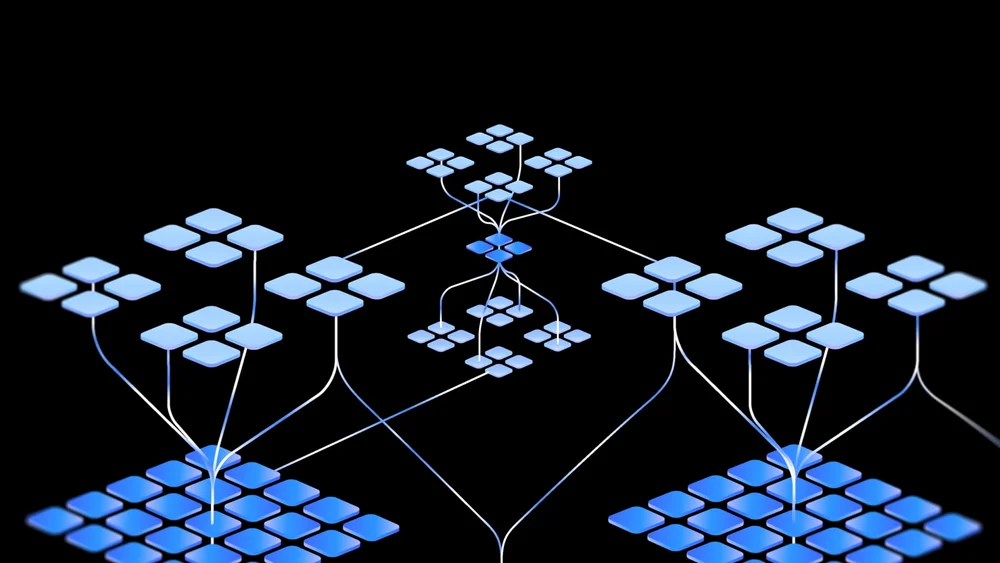Last month, two of the most influential companies in artificial intelligence, OpenAI and Google, unveiled their latest advancements, marking significant leaps in the generative AI landscape. Both announcements created a buzz, showcasing new features to redefine our interaction with technology.
The Announced features at a glance
| Feature | GPT-4o | Gemini 1.5 Pro | Comparison |
| Context Window |
One million tokens | Two million tokens | Google’s Gemini 1.5 Pro takes the lead with a larger context window, crucial for complex and lengthy interactions. |
| Multimodal Capabilities |
Text, image, and audio integration |
Similar multimodal integration focusing on efficiency and real-time processing |
Both models excel, but GPT-4o’s integration appears more seamless in handling various input types simultaneously. |
| Efficiency and Speed |
Optimized for reduced latency and faster processing |
Specifically designed for efficiency, maintaining high performance with a smaller footprint |
Competition is tight, with both models offering significant improvements in speed and efficiency. |
| Integration and Usability |
Primarily a standalone model with potential integrations |
Integrated into Google’s ecosystem, including Workspace and other applications, enhancing usability and accessibility |
Google’s ecosystem provides an edge in usability, making Gemini 1.5 Pro more accessible to a broader audience. |

Even while I was watching the live stream for OpenAI, the talking heads were at it. I was overwhelmed by the Gaggle of opinionated experts pouring out of YouTube, TikTok, and Instagram. By the afternoon of May 15th, I had lost count of the great deluge of experts. I have the urge to say what Ms. Thmopson used to say to me with her southern accent when I talked too much, ‘God, can only bless you, child.’
Less than a month later, it seems we are back down to the normal ratio of experts to mere humans, so I thought it a good time to share my take.
Stories aside, Let’s dive into what each has introduced and compare these two AI powerhouses.
OpenAI’s Big AI Leap: GPT-4o generative ai model
OpenAI has consistently positioned itself at the forefront of innovation in the rapid evolution of artificial intelligence (AI). Early AI research, which focused on specialized programming languages and the development of algorithms that imitated human reasoning and problem-solving, laid the groundwork for these advancements. Generative AI researchers and pre-trained fine-tuned models from human experts have played a crucial role in developing GPT-4o and next-layer AI advancements. The recent unveiling of GPT-4o represents a significant stride in the ongoing improvements to Generative AI. This latest upgrade to the GPT series promises to revolutionize AI interaction by blending impressive advancements in multimodal capabilities, efficiency, and user engagement.
Key Features of GPT-4o
Multimodal Mastery
One of the standout features of GPT-4o is its integration of text, image, and audio processing. This multimodal capability allows for more natural and versatile interactions, enabling users to communicate through various inputs seamlessly. Whether analyzing an image, understanding spoken language, or processing text, GPT-4o handles these tasks with remarkable ease. Convolutional neural networks contribute significantly to its image recognition capabilities by filtering different parts of an image before putting it back together. This multimodal capability enhances the performance of AI systems in various applications by providing more comprehensive data analysis and interaction. 4o’s versatility points to new possibilities for applications in fields such as education, customer service, and content creation, where different types of inputs are often used.
Enhanced Context Understanding
GPT-4o boasts an extended context window of up to one million tokens. This enhancement allows the model to maintain coherent and relevant conversations over extended interactions, making it ideal for complex tasks and lengthy dialogues. For instance, in customer support, this capability ensures that the AI can keep track of prolonged customer interactions without losing context, thereby providing more accurate and helpful responses.
Efficiency and Speed
Optimized for faster processing and reduced latency, GPT-4o significantly improves user experience in real-time applications. This efficiency is particularly crucial in environments where quick response times are essential, such as live chat support and real-time data analysis. GPT-4o can be used as one of the AI tools to improve real-time data analysis and customer service, ensuring smoother and more productive interactions by minimizing delays.
Advanced Reasoning
The upgraded architecture of GPT-4o enhances its logical reasoning and problem-solving abilities. Deep neural networks play a crucial role in this enhancement by using several layers of neurons to extract higher-level features from raw input, thereby improving logical reasoning and problem-solving capabilities. This makes the model more reliable for various applications, from customer service to advanced research. In research, for example, GPT-4o can assist in synthesizing complex information and generating insightful hypotheses, thereby accelerating the pace of discovery.
“Virtual-human” Interaction
Improvements in natural language processing enable GPT-4o to deliver more human-like responses in tone and context. This enhancement significantly boosts user engagement and satisfaction. GPT-4o can foster a sense of connection by mimicking human conversational styles more closely, which is particularly valuable in customer-facing applications.
These features collectively make GPT-4o a formidable tool in the AI space, poised to drive innovation across various sectors. Its advanced capabilities are not just incremental improvements but represent a paradigm shift in the utilization of AI.
Google’s AI Renaissance: Gemini 1.5 generative AI model and Project Astra
In May 2024, Google’s annual I/O event unveiled many innovations, but none captured the spotlight, like their artificial intelligence advancements. Introducing the Gemini 1.5 series and the ambitious Project Astra signifies a significant leap in Google’s AI journey.
Highlights of Gemini 1.5
The Gemini 1.5 series is a testament to Google’s commitment to advancing AI capabilities. This series includes two models that cater to different needs: Gemini 1.5 Flash and Gemini 1.5 Pro.
Gemini 1.5 Flash
Gemini 1.5 Flash is designed as a lighter, faster version of the AI model, focusing on efficiency without compromising performance. Despite its smaller size, Flash maintains high performance in multimodal reasoning and features a one million token context window. Flash is particularly suitable for tasks requiring quick summarization and data extraction, where speed and efficiency are paramount. The Flash model exemplifies how AI can be powerful and agile, meeting the demands of rapid information processing in various applications, from real-time analytics to responsive digital assistants.
Gemini 1.5 Pro
Gemini 1.5 Pro pushes the boundaries even further. It boasts a context window of two million tokens, allowing it to handle more complex and extended interactions than its predecessors. This extended context capability enhances the AI’s performance in multi-turn conversations and logical reasoning, making it ideal for more sophisticated tasks like code generation and detailed analytical work. Integration into Google’s suite of products, including Google Workspace, further enhances its functionality, allowing users to leverage advanced AI capabilities directly within the tools they use daily. This seamless integration boosts productivity and simplifies complex workflows by providing intelligent assistance at every step.
Project Astra: The Future of AI Assistants
Alongside the Gemini 1.5 series, Google introduced Project Astra, an ambitious initiative that aims to redefine the future of AI assistants. Project Astra is envisioned as a universal agent capable of advanced multimodal understanding and real-time conversational abilities. Astra represents a significant step towards creating AI that seamlessly integrates into everyday life, providing assistance that is both intuitive and omnipresent.
One of Project Astra’s key goals is to enhance the AI’s ability to understand and process multiple forms of input—text, images, audio, and even video. This multimodal understanding allows the AI to interact more naturally and effectively, comprehending the nuances of human communication better than ever before. Whether interpreting a spoken query, analyzing an image, or processing written text, Astra aims to provide accurate and contextually relevant responses.
Project Astra emphasizes real-time conversational abilities, aiming to make interactions with AI as seamless and natural as possible. This involves understanding and responding to queries quickly and maintaining the flow of conversation over extended periods. The goal is the creation of an AI that can engage in meaningful dialogue, providing valuable insights and assistance without the need for constant re-prompting or clarification.
The most exciting aspect of Project Astra is its vision for integration into daily life. Google envisions Astra as a ubiquitous assistant across various devices and platforms, including potential integration into wearable technology. This would make AI assistance accessible at all times, whether at home, in the office, or on the go. Imagine an AI that can help you draft an email, navigate a busy schedule, provide real-time translations during travel, and even offer reminders or suggestions based on your daily routines—all without switching devices or applications.
Comparing the Titans: GPT-4o vs. Gemini 1.5
While OpenAI made headlines with GPT-4o, Google also introduced its next-generation AI models, Gemini 1.5 Flash and Gemini 1.5 Pro. These advancements mark significant milestones in Google’s AI journey, showcasing their dedication to pushing the boundaries of what AI can achieve.
Context Window in Natural Language Processing
One of the critical differentiators between GPT-4o and Google’s Gemini 1.5 Pro is the context window. GPT-4o offers an impressive one million tokens, enabling it to handle lengthy conversations and complex tasks efficiently due to its robust computing power. However, Google’s Gemini 1.5 Pro surpasses this with a context window of two million tokens. This larger context window allows Gemini 1.5 Pro to manage even more extended and intricate interactions, which can be crucial for applications requiring extensive data retention and processing. In comparison to human intelligence, both models strive to maintain coherent and relevant conversations over extended interactions, mimicking the human ability to reason and stay contextually aware.
Multimodal Capabilities in AI Systems
GPT-4o and Gemini models excel in multimodal capabilities, integrating text, image, and audio processing. Deep learning techniques are used to enhance these capabilities by enabling the models to process information through artificial neural networks with multiple layers, mimicking the structure and function of the human brain. Artificial neural networks enable multimodal processing by integrating text, image, and audio data. This continuous learning and adaptation allow AI systems to perform specific tasks, such as recognizing images and translating languages. However, GPT-4o’s integration appears more seamless, particularly in handling various input types simultaneously. This makes GPT-4o more versatile in scenarios where different forms of data need to be processed in conjunction. Neural networks play a crucial role in enhancing the multimodal capabilities of AI systems. On the other hand, Gemini 1.5 models focus on efficiency and real-time processing, which can be advantageous in environments requiring rapid response times.
Efficiency and Speed in Deep Learning
The competition between GPT-4o and Gemini 1.5 Flash is tight regarding efficiency and speed. Both models have been optimized for reduced latency and faster processing. The use of extensive training data contributes to the optimized performance and reduced latency of GPT-4o and Gemini 1.5 Flash. Additionally, machine learning AI techniques play a crucial role in optimizing performance and reducing latency in both models. GPT-4o is designed to enhance user experience in real-time applications, ensuring smooth and productive interactions. Similarly, Gemini 1.5 Flash is designed for efficiency, maintaining high performance with a smaller footprint. This makes Gemini 1.5 Flash particularly suitable for deployment in resource-constrained environments.
Integration and Usability of AI Tools
Integration and usability are areas where Google’s Gemini 1.5 Pro has a distinct advantage. Integrated into Google’s ecosystem, including Workspace and other applications, Gemini 1.5 Pro enhances usability and accessibility. Machine learning techniques, including deep neural networks, are integrated into Google’s ecosystem to enhance the usability and functionality of Gemini 1.5 Pro. This integration allows users to leverage the AI’s capabilities directly within their existing tools, streamlining workflows and improving productivity. In contrast, GPT-4o, while a powerful standalone model, still needs to offer the same level of seamless integration into existing software ecosystems.
Future Vision
While both OpenAI and Google are pushing the boundaries of AI capabilities, their visions for the future reflect different priorities and approaches.
Integration vs. Versatility
Google’s vision, as demonstrated by Project Astra, is focused on the deep integration of AI into daily life. This universal assistant approach aims to make AI an indispensable part of everyday activities, providing assistance that is always within reach. In contrast, OpenAI’s focus on creating versatile models like GPT-4o highlights a broader application range, aiming to provide high-performing AI solutions across various domains.
Virtual-human Interaction vs. Real-time Assistance
OpenAI emphasizes human-like interaction, striving to make their AI feel more natural and intuitive in conversations. This focus on emotional nuance and contextual understanding is essential for personal interaction applications. Google, however, prioritizes real-time assistance, ensuring that its AI can provide timely and relevant responses in ongoing interactions, which is critical for productivity and efficiency.
FAQs
Q1: What are the key differences between OpenAI’s GPT-4o and Google’s Gemini 1.5 models?
A1: OpenAI’s GPT-4o and Google’s Gemini 1.5 models have distinct features tailored to different needs:
-
-
- Context Window: GPT-4o offers a context window of one million tokens, while Gemini 1.5 Pro extends this to two million tokens, enabling it to handle more complex and extended interactions.
- Multimodal Capabilities: Both models integrate text, image, and audio processing. However, GPT-4o’s integration is more seamless, making it versatile for applications requiring different forms of data simultaneously. Gemini 1.5, particularly the Flash version, emphasizes efficiency and real-time processing. Additionally, both models excel in speech recognition as part of their multimodal capabilities, enhancing their performance in natural language processing tasks.
- Efficiency and Speed: Both models are optimized for reduced latency and faster processing. GPT-4o enhances user experience in real-time applications, while Gemini 1.5 Flash maintains high performance with a smaller footprint, suitable for resource-constrained environments.
- Integration and Usability: GPT-4o is a standalone model with potential integrations, whereas Gemini 1.5 Pro is deeply integrated into Google’s ecosystem, including Google Workspace, enhancing usability and accessibility.
- Applications and Implications of Machine Learning AI: Both models leverage machine learning AI for various applications. GPT-4o and Gemini 1.5 can be utilized by bad actors, including authoritarian governments, terrorists, and criminals, for purposes such as developing autonomous weapons, conducting surveillance, targeting propaganda, producing misinformation, and even designing toxic molecules.
-
Q2: What advancements does GPT-4o bring to AI interaction?
A2: GPT-4o introduces several significant advancements in AI interaction:
-
-
- Multimodal Mastery: It seamlessly integrates text, image, and audio processing, allowing natural and versatile interactions.
- Enhanced Context Understanding: With a context window of up to one million tokens, it maintains coherent and relevant conversations over extended interactions.
- Efficiency and Speed: Optimized for faster processing and reduced latency, it improves user experience in real-time applications.
- Advanced Reasoning: Its upgraded architecture enhances logical reasoning and problem-solving abilities, making it reliable for various applications.
- Virtual-human Interaction: Improvements in natural language processing enable it to deliver more human-sounding virtual assistants, boosting user engagement and satisfaction.
-
Q3: How does Google’s Project Astra envision the future of AI assistants?
A3: Project Astra represents Google’s vision of a universal AI assistant integrated into daily life:
-
-
- Advanced Multimodal Understanding: It aims to process and understand multiple forms of input, including text, images, audio, and video, providing accurate and contextually relevant responses.
- Real-time Conversational Abilities: Designed for seamless and natural interactions, it can maintain the flow of conversation over extended periods, offering timely and relevant responses.
- Integration into Daily Life: Google envisions Astra as a ubiquitous assistant across various devices and platforms, including potential integration into wearable technology. This ensures that AI assistance is always accessible, enhancing productivity and convenience in various contexts.
-
Q4: How do the future visions of OpenAI and Google differ regarding AI development?
A4: OpenAI and Google have distinct future visions for AI development:
-
-
- Integration vs. Versatility: Google’s Project Astra focuses on deep integration into daily life, aiming to make AI an indispensable part of everyday activities. In contrast, OpenAI emphasizes creating versatile models like GPT-4o that can be applied across various domains.
- Virtual-human Interaction vs. Real-time Assistance: OpenAI prioritizes human sounding interaction, striving for natural and intuitive conversations. This focus is essential for applications involving personal interaction. On the other hand, Google prioritizes real-time assistance, ensuring its AI provides timely and relevant responses, crucial for productivity and efficiency.
-
These differences reflect their strategic priorities and the transformative potential of AI, highlighting how each company aims to revolutionize AI interaction and integration in distinct ways.
Conclusion
Both OpenAI and Google are at the forefront of advancing AI technology with their latest developments. OpenAI’s GPT-4o stands out for its remarkable multimodal capabilities and enhanced reasoning, positioning it as a versatile and powerful tool for a wide range of applications. On the other hand, Google’s Gemini 1.5 series and Project Astra are pushing the technical boundaries, envisioning a future where AI seamlessly integrates into our daily lives, providing real-time assistance and deep integration.
The strategic priorities and AI’s transformative potential are reflected in the future visions of OpenAI and Google. OpenAI’s GPT-4o is designed to emphasize versatility, advanced reasoning, and human-like interaction, making it a robust solution across various domains. In contrast, Google’s Project Astra and Gemini 1.5 series emphasize deep integration and real-time assistance, aiming to make AI a ubiquitous helper in daily life.
As these AI models continue to evolve, the competition between OpenAI and Google will lead to further innovations, bringing us closer to realizing artificial intelligence’s full potential. Whether through the advanced capabilities of GPT-4o or the integrated support of Project Astra, the next generation of AI holds the promise of transforming and enhancing our interaction with technology in unprecedented ways.
The competition between these two giants in the AI space is driving innovation, offering a vision of a future where AI not only assists but also enhances human capabilities in unprecedented ways. Whether you’re enthused about the advanced reasoning of GPT-4o or the visionary integration of Gemini and Project Astra, one thing is certain: the AI revolution is here, and it’s more exciting than ever.


